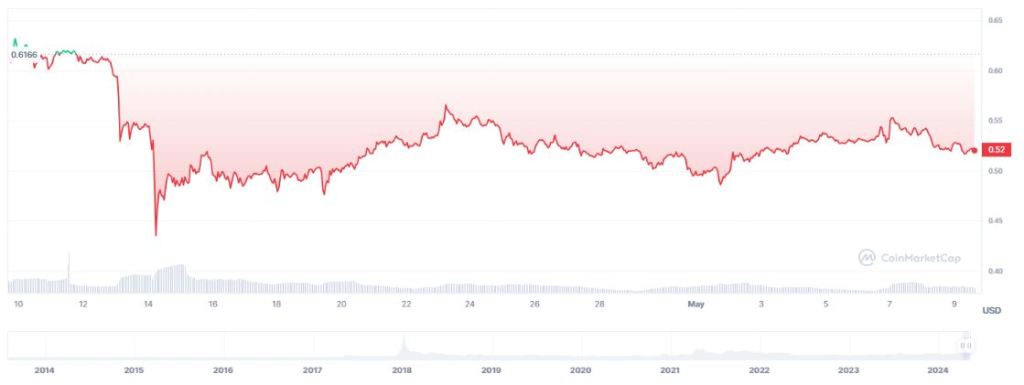
2019-10-18 00:27 |
From debt to equity and funds management to derivatives, established primary and secondary markets are being transformed by decentralized technologies—and regulators are keeping a close watch on the changes. As the industry around blockchain and digital assets matures, we are seeing tangible use cases emerge. But what are the potential challenges and policy implications as these technologies progress, and what opportunities does the industry have to work with regulators on solving them?
At the recent OECD Global Blockchain Policy Forum in Paris, I had the opportunity to speak alongside several industry leaders to discuss the latest developments in digital financial marketplaces, and explain how these changes are reshaping the sector. In addition, our panel shared why sustainable applications of Distributed Ledger Technology (DLT) hinge on clear, appropriate and consistent regulatory approaches.
DLT Innovation Trends
Surprisingly, the day-to-day activities for some organizations in the financial services industry still involve paper documents and fax machines. Even those that have moved to digital formats have designed bespoke systems that slow down communication and data management.
By leveraging DLT, leaders are working within traditional financial institutions to create ways to automate processes and unleash innovation. During the panel, for example, Vanguard’s Head of Blockchain Strategy explained that the company is currently testing blockchain to automate certain index fund-related activities as a precursor to larger and more public capital markets use cases. And the CEO of ISDA shared how their new Common Domain Model (CDM) uses distributed ledger technology to provide common data structures and processes for derivatives, encouraging interoperability and consistency between firms and platforms.
Outside of traditional financial players, there are a number of fintech companies building and innovating in the space as well. For example, there are companies around the world now using blockchain and digital assets to facilitate donations and raise funds for new ventures. During the panel, the CFO of Binance shared how the company is leveraging blockchain in Uganda to deliver digital assets to fund initiatives like free lunch for school children. Binance envisions programs such as these as proving grounds for a future where people can raise capital and fund innovation with the only requirement being access to the internet.
A Collaborative Approach
Ripple’s vision is to collaborate between traditional financial institutions and technology innovators for the explicit use case of cross border payments. Specifically, by leveraging the digital asset XRP as a bridge currency, Ripple facilitates instant fiat-to-fiat payments across borders for partners like MoneyGram.
There is no singular third party or global central bank that keeps track of how cross-border payments move and are settled, so the world has created a complex system of correspondent banking and nostro/vostro accounts that trap an estimated $10 trillion dollars in capital. Using digital assets as a bridge currency can efficiently free up this trapped capital and make the process of sending money cross-border faster, less expensive, and more scalable, by providing liquidity on demand.
Driving Institutional Adoption
It is important to remember that digital asset markets are still in a relatively nascent stage, and driven predominantly by speculators. All market participants, but especially larger institutional players, want to trade in deeper liquidity pools. As the industry matures and more robust financial products are developed for digital assets, including hedging instruments such as futures and derivatives, we will see new entrants into the ecosystem. Already in the past year or so, it’s been very promising to see movement from more traditional institutional names entering the space on both the infrastructure and equity investing side, including Fidelity, Bakkt (ICE), TD Ameritrade and Goldman Sachs.
In addition to notable institutions entering the space, another clear driver of wider adoption is the development of practical use cases for digital assets. Today, developed countries still ask why they should leverage digital assets. By developing practical, real-world use cases that offer improved efficiency and impact the bottom line, we will continue to see adoption rates increase.
At Ripple, we see payments as the first obvious use case for digital assets. A key innovation in leveraging a blockchain for payments is that you can move value efficiently—and many subsequent use cases for blockchain technology, including trade finance, smart contracts and lending—all stem directly from the payments innovation. This is why we are focused on this baseline use case first. With digital assets, for the first time, there’s a way to settle transactions across currencies instantaneously—this helps optimize risk management frameworks, and reduces significant friction pain points including time, trapped capital, and excessive fees. As additional use cases beyond payments develop, more capital will enter the space.
Need for Flexible Frameworks
To initiate more adoption and drive innovation, there was a unanimous call on the panel for nimble regulatory approaches that distinguish between token use cases and allow for policies that can grow alongside an evolving technology.
Throughout the industry, there is concern that a lack of clear, consistent guidance from the U.S. could lead to a talent flight where innovators and companies will gravitate towards regions with defined regulatory frameworks. No doubt, as the industry continues to mature, governments and policy makers are feeling the urgency for more regulatory clarity. The U.S. and other pro-innovation countries can set the tone for the rest of the world to follow. And we hope that they will.
The post Blockchain Innovation: Opportunities, Challenges and Policy Implications appeared first on Ripple.
Similar to Notcoin - TapSwap on Solana Airdrops In 2024
High Performance Blockchain (HPB) íà Currencies.ru
|
|








